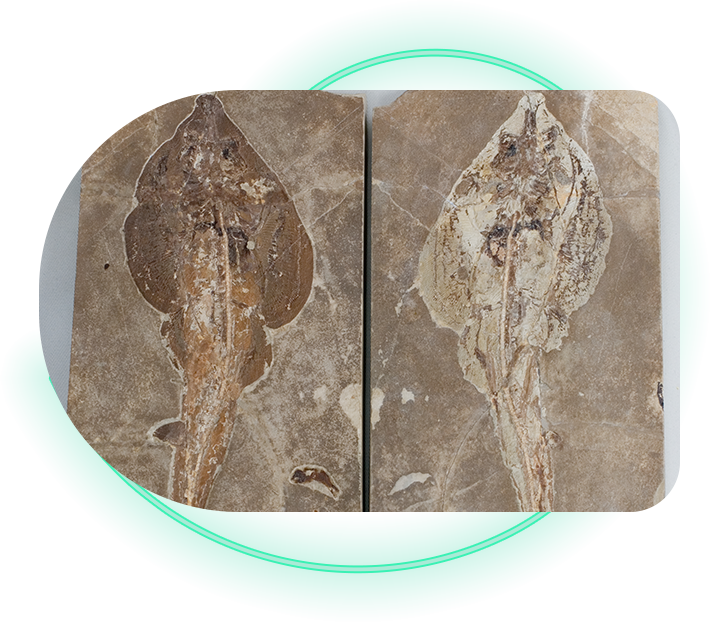Favorite CollLection Triceratops Real Figure Keyring
$11.95

The fossil fish from Lebanon have a long history of investigation. The sites, Hakel and Hajula, are situated just to the east of the ancient city of Byblos. It is thought that they were first referred to in the the writings of Herodotus, where fishes in the stones are mentioned. The occurrence is next mentioned in a crusade journal from the 13th century. These marvelous deposits have been investigated and explored, at least periodically, ever since.
Aside from the simple marvel of finding a fish embedded in solid stone, these deposits have yielded many clues about the history of fish evolution. They are from a Late Cretaceous stage called the Cenomanian. The Cenomanian (about 95 million years ago) was a time when the fishes in the oceans were changing. Many ancient groups were becoming extinct, and modern groups were developing to take their places. The Lebanese fish deposits capture this changeover and help us understand how existing fish communities came to be.
The fish deposits at Hakel and Hajula were, for quite a long time, also a geological puzzle. Unlike many deposits where strata can be followed over large distances, the deposits there are small and discontinuous. Finally, about 1970, German scientists were able to interpret the fish beds in a manner which made sense. The deposits which contain the diverse faunas were the result of a series of localized ocean-bottom landslides. A cross-section of life in the area, mostly crustaceans and fish, was trapped in the fine-grained sediment as it shifted and flowed into deeper parts of the basins.
The Lebanese fish beds are known for the amazingly well-preserved fish fossils found there. There is a tremendous diversity. Sharks, skates, rays, and chimaeras are, perhaps, the best known. Many of these are bottom dwelling forms which were easily trapped by the moving sediment, but, the bottom dwellers were not the only ones trapped. There are many clupeomorph (herring-like), salmoniform, and other fast swimming fishes, as well. Fishes which resemble the modern angel fishes and other reef-dwellers are also abundant. Archaic groups with heavy ganoid scales are also found. Many other types of fish are also preserved, including the rare box fish and even coelacanths.
The Institute has numerous fossil fish for sale. These include specimens not only from the Lebanese area, but also from the Green River and Niobrara Chalk Formations of Wyoming and Kansas, respectively.